THE TABLET OF DESTINIES VI: UHRN.TXT
Poems in Posthuman Akkadian
EPISODE 12/6
Episode 12/1 – NAM, FATE
Episode 12/2 – MAGNETAR.MELAMMU
Episode 12/3 – UHRN.MONDe
Episode 12/4 – NAM.TXT
Episode 12/5 – MELAMMU.TXT
Camera: Tman
Cast: Totleb & Co.
Editor: Todito
Soundmix: Todonsky Junior
Directed by: T.L.
POEMS IN POSTHUMAN AKKADIAN
written by General Totleben
© Ivan Stanev, executor testamentarius
Read the full text of the poem THE TABLET OF DESTINIES h e r e (p.104 – 133)
Topics
Ninurta, The Tablet of Destinies, Light-Cone, Boltzmann Brain, Entropy, Vacuum Structure, Arrow of Time
…under the light cone of Zeit
lies a reverse iconic night…
from UHRN.MONDe / PPA
Light Cone
In special and general relativity, a light cone is the path that a flash of light, emanating from a single event (localized to a single point in space and a single moment in time) and traveling in all directions, would take through spacetime.
If one imagines the light confined to a two-dimensional plane, the light from the flash spreads out in a circle after the event E occurs, and if we graph the growing circle with the vertical axis of the graph representing time, the result is a cone, known as the future light cone. The past light cone behaves like the future light cone in reverse, a circle which contracts in radius at the speed of light until it converges to a point at the exact position and time of the event E. In reality, there are three space dimensions, so the light would actually form an expanding or contracting sphere in threedimensional (3D) space rather than a circle in 2D, and the light cone would actually be a four-dimensional version of a cone whose cross-sections form 3D spheres (analogous to a normal three-dimensional cone whose cross-sections form 2D circles), but the concept is easier to visualize with the number of spatial dimensions reduced from three to two.
This view of special relativity was first proposed by Albert Einstein’s former professor Hermann Minkowski and is known as Minkowski space. The purpose was to create an invariant spacetime for all observers. To uphold causality, Minkowski restricted spacetime to non-Euclidean hyperbolic geometry. Because signals and other causal influences cannot travel faster than light (see special relativity), the light cone plays an essential role in defining the concept of causality: for a given event E, the set of events that lie on or inside the past light cone of E would also be the set of all events that could send a signal that would have time to reach E and influence it in some way. For example, at a time ten years before E, if we consider the set of all events in the past light cone of E which occur at that time, the result would be a sphere (2D: disk) with a radius of ten light-years centered on the position where E will occur. So, any point on or inside the sphere could send a signal moving at the speed of light or slower that would have time to influence the event E, while points outside the sphere at that moment would not be able to have any causal influence on E. Likewise, the set of events that lie on or inside the future light cone of E would also be the set of events that could receive a signal sent out from the position and time of E, so the future light cone contains all the events that could potentially be causally influenced by E. Events which lie neither in the past or future light cone of E cannot influence or be influenced by E in relativity.
…In flat spacetime, the future light cone of an event is the boundary of its causal future and its past light cone is the boundary of its causal past. In a curved spacetime, assuming spacetime is globally hyperbolic, it is still true that the future light cone of an event includes the boundary of its causal future (and similarly for the past). However gravitational lensing can cause part of the light cone to fold in on itself, in such a way that part of the cone is strictly inside the causal future (or past), and not on the boundary. Light cones also cannot all be tilted so that they are ‘parallel’; this reflects the fact that the spacetime is curved and is essentially different from Minkowski space. In vacuum regions (those points of spacetime free of matter), this inability to tilt all the light cones so that they are all parallel is reflected in the non-vanishing of the Weyl tensor.
Languages / scripts used: Sumerian, Akkadian, Proto-Elamite, Ancient Greek, Russian, German, French, English
Acknowledgements
freesound.org; cdli.ucla.edu; The Electronic Text Corpus of Sumerian Literature (ETCSL); Encylopaedia Britannica; arxiv.org; Zabelle Panosian – Groung (Crane) 1917

